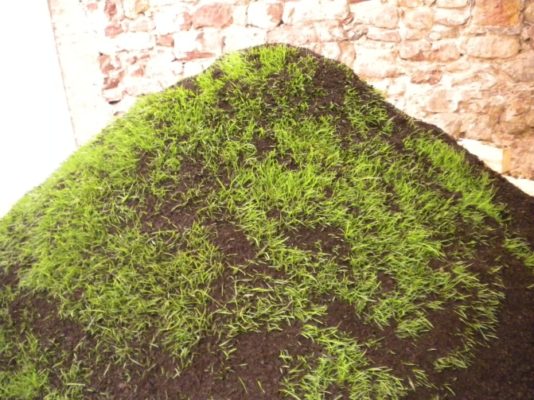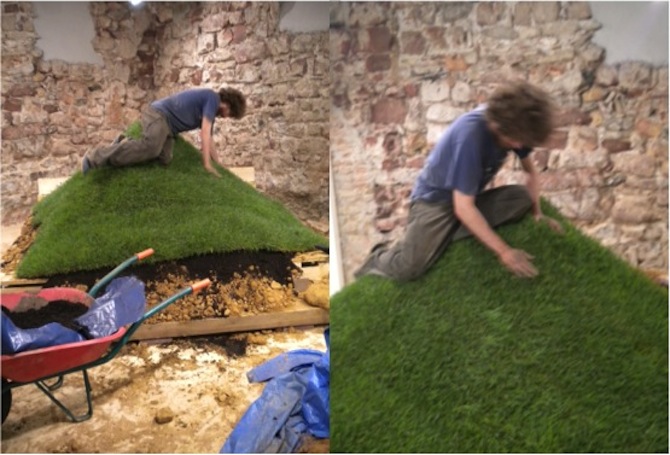Search
To search for an exact match, type the word or phrase you want in quotation marks.
A*DESK has been offering since 2002 contents about criticism and contemporary art. A*DESK has become consolidated thanks to all those who have believed in the project, all those who have followed us, debating, participating and collaborating. Many people have collaborated with A*DESK, and continue to do so. Their efforts, knowledge and belief in the project are what make it grow internationally. At A*DESK we have also generated work for over one hundred professionals in culture, from small collaborations with reviews and classes, to more prolonged and intense collaborations.
At A*DESK we believe in the need for free and universal access to culture and knowledge. We want to carry on being independent, remaining open to more ideas and opinions. If you believe in A*DESK, we need your backing to be able to continue. You can now participate in the project by supporting it. You can choose how much you want to contribute to the project.
You can decide how much you want to bring to the project.

Right on entering the Muxart Espai d’Art i Creació in Martorell, a town nearby Barcelona, I’m surprised to come across a work by Hans Haacke. Astonished, but not startled, by the mere presence of this international artist in a recently inaugurated centre with a programme of emerging authors and curators. The work, Grass grows, by Haacke sits in the space, a mound of earth where natural grass seed germinates and indifferently continues with its process of growth despite the conditions of the interior. Simple and natural, a system with a life of its own, with the same critical genealogy as the works Condensating Cube or Bowery Seeds. A piece that doesn´t represent anything, that is in itself an autonomous random reality, now a system that places diverse elements, some natural and others narrative, in relation to each other.
The grass grows according to the conditions of the space. This relationship follows a process far removed from the institutional roof that houses it and the public can´t identify the variables affecting the germination time. Something akin to botanical chance appropriates the art system. Haacke with this work provides us with an organic counterpoint to the constitutional system of art, to its economic and political flux. Grass Grown (1969-2012) is an autonomous piece that only reacts to its surroundings, far removed from the propositions or work of the author, as well as from the reception of the spectator or any institutional interests. Reality supersedes the protocol of the cultural space and the mound of grass frees itself from the artist, silently questioning the very concept of the author or originality. In the museum the natural process transforms into a narrative process through dramatization and rhetorical artifice.
Haacke is the biological creator of this work that has been made on diverse occasions and is currently at the Haus der Kunst de Munich. In Martorell, the real author of the grass is Pep Vidal, who through precise high-tech processes and a great deal of effort makes a work that is the same in form and volume as that of the German artist. The proposition is rather futile, and in this case impossible, to copy the random growth of grass in another place, based on the work of another artist. The project takes on this double paradox, a symmetrical aporia.
This work, the remake of Grass Grown, forms part of the exhibition programme Apropiació indeguda (Wrongful appropriation) curated by Laura Bel and Rafael Haro. All the projects that appear in the rooms of the Muxart space in Martorell, with different times and artists (Ellen Wilkinson, Cristina Prats, Alba Aguirre, Joana Santamans, Oriol Sánchez, Albert Alcoz and Nico Roig), are processes of appropriation or deviation from resources and narratives of other pieces or conceptual registers. The diffuse concept of “appropriation” guides this project and Pep Vidal directs his work according to three objectives: to continue questioning the notion of authorship through the appropriation of a work by Haacke, to observe the uselessness of technology in scientific or aesthetic processes and to reflect on the impossibility of being able to reproduce certain systems that, naturally and straightforwardly, surround us.
 For Pep Vidal, a mathematician now involved in producing critical thought and contemporary art (www.pepvidal.com), lthe unknown variables of any natural system are random, and like Duchampian chance, trace the frontiers between the known and the unknown. Science and art share this challenge. It is impossible, perhaps gratuitous to determine how and when the grass will grow in this unnatural space, however, during the weeks of the exhibition Vidal undertakes a meticulous technical process of Haackean simulation. The artist knows precisely the state of Haacke’s piece and endeavours to replicate it meticulously delimiting the space and using 3D technology in its construction. The work begins the day of the inauguration and one week later concludes with a minimal copying error. Each week the process of comparing the work of Munich and that of Martorell is repeated. Through technical repairs, the two mounds remain almost exactly the same, despite the differences in location and climatic conditions.
For Pep Vidal, a mathematician now involved in producing critical thought and contemporary art (www.pepvidal.com), lthe unknown variables of any natural system are random, and like Duchampian chance, trace the frontiers between the known and the unknown. Science and art share this challenge. It is impossible, perhaps gratuitous to determine how and when the grass will grow in this unnatural space, however, during the weeks of the exhibition Vidal undertakes a meticulous technical process of Haackean simulation. The artist knows precisely the state of Haacke’s piece and endeavours to replicate it meticulously delimiting the space and using 3D technology in its construction. The work begins the day of the inauguration and one week later concludes with a minimal copying error. Each week the process of comparing the work of Munich and that of Martorell is repeated. Through technical repairs, the two mounds remain almost exactly the same, despite the differences in location and climatic conditions.
The disproportionate use of technology and mathematical methods employed by Pep Vidal in the whole process of constituting and restoring the mound of grass, an authority that legitimises the human effort, can’t evade the frustrating experience of futility, of technology at the service of a rhetorical delirium. To copy and replicate the simplicity of grass growing and to do so by way of a specific well-known art piece supposes a dramatization, that is to say a temporality, between the presence of the work and its performativity. The structure of repetition, like a loop, creates a work without expectations or psychological resonance that only shows the impossibility of a determined position of the power of scientific or artist discourse. In the face of this gesture, with all its referents and in a new space for contemporary art in times of recession, I couldn´t avoid my celebratory amazement: Haacke, Vidal, Muxart, Munich and Martorell seduce me with the eroticism of failure and the power of the peripheral, deviance as strategy to constitute meaning

Pilar Bonet Julve is a researcher and teacher. She has a degree in Medieval History and a PhD in Art History from the UB, where she teaches contemporary art and design, art criticism and curating. She is interested in the overflowing and political spaces of art, she is not motivated by heraldic criticism or the vase exhibition. A specialist in the life and work of the Catalan medium and artist Josefa Tolrà, she follows in the footsteps of visionary women as an experience of new humanity. She has recently presented exhibitions on irregular creativity: Josefa Tolrà and Julia Aguilar, Les Bernardes de Salt; ALMA. Médiums i Visionàries, Es Baluard Museum, Palma; La médium i el poeta. An astral conversation between Josefa Tolrà and Joan Brossa, Fundació Brossa. Writing and editing pacifies his soul. She manages the research group Visionary Women Art [V¬W].
www.josefatolra.org
@visionarywomenart
@josefatolra
@pilarbonetjulve
@artscoming
"A desk is a dangerous place from which to watch the world" (John Le Carré)